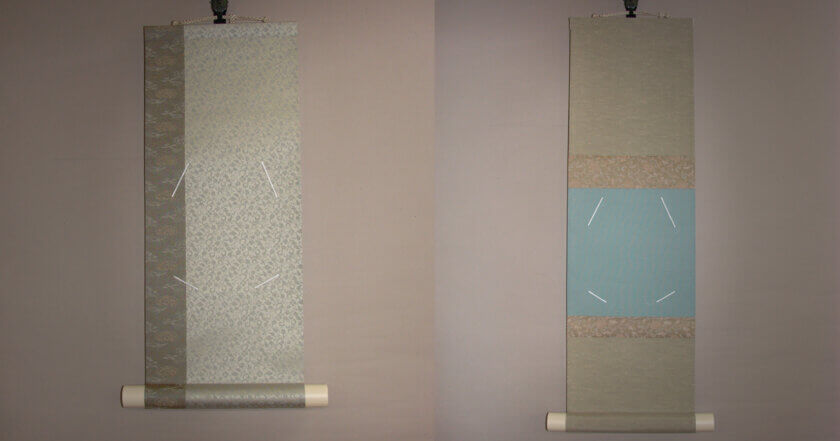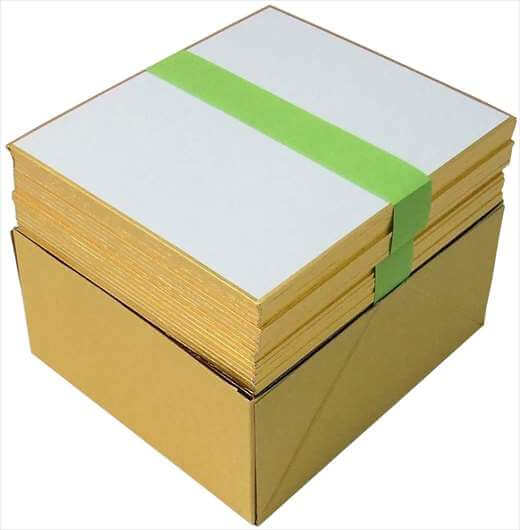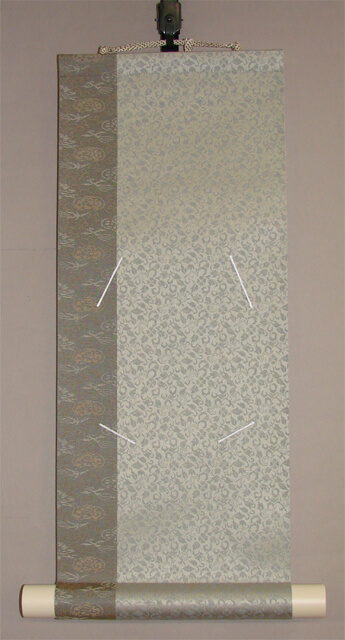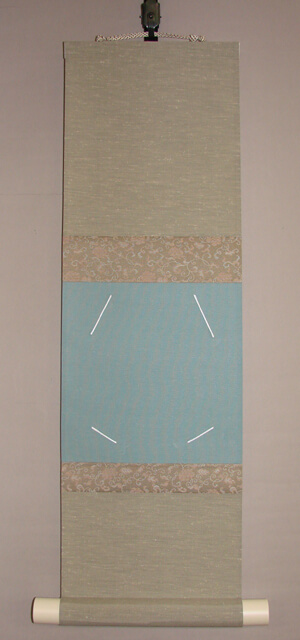Request for Making Sunshōan-Gake Scroll from the U.K.

Request for Making Sunshōan-Gake Scroll from the U.K.
Each time we receive our foreign customer’s request which is not that familiar here in Japan, we feel pretty refreshed.
This episode, about a request for making a sunshōan gake placed by a British gentleman, perfectly represents these experiences.
Sunshōan-gake…? We haven’t yet taken the request for the specific kakejiku and we didn’t even have an idea of such a word ‘sunshōan-gake’.
After a little search, we got the idea of sunshōan and here it is.
Sakuma Sanekatsu, a well-known master of tea ceremony who made his name from the Azuchi-Momoyama to the early Edo period built a hermitage named Sunshōan in the precincts of Ryūkō-in Temple, a sub-temple of Daitoku-ji Temple in Kyoto where he used to cherish 12 fragments of the manuscript of the “Kokin Wakashū” and ‘Sunshōan Shikishi’is what these pieces of work were later called.
It’s said that shikishi- a square piece of fancy paper with the identical size of sunshōan shikishi began to be called ‘Sunshōan Shikishi’later on.
Well, that’s something…we had no idea. The size is 121(w)×136(h)mm which is smaller than the size of a regular shikishi (paper board) 242(w)×272(h)mm and that is exactly 1/4 proportionally.

Sunshōan Shikishi
The customer’s request was to create a customized kakejiku for sunshōan shikishi.
We can easily imagine that it wasn’t easy to find a shop selling the off-the-peg kakejiku specially designed for the centerpiece overseas given it’s hardly being traded even in Japan.
After having the consultation with him, we were to create 2 types of sunshōan-gake.
See the 2 pieces of sunshōan-gake we were assigned to make this time.

19cm x 47cm sized type

19cm x 62cm sized type
Even though both of the petite kakejikus give a feeling of cuteness, their tiny size made our work rather tricky….
All in all, the work was worthwhile by knowing that the customer was thrilled with our finished products.
As you see in this episode, we offer a service of sunshōan-gake too. So please feel free to contact us if you are considering this particular order.

